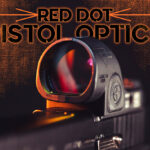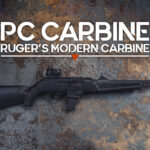
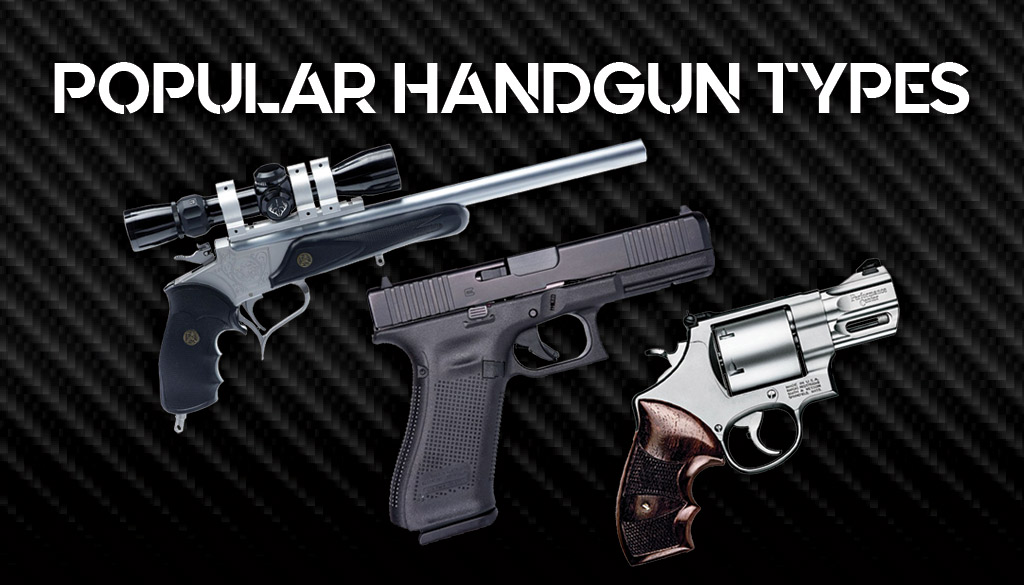
By Guy J. Sagi
Handguns come in more varieties, models, and makes than ever before. Today’s wide selection of popular handgun types can be intimidating as new enthusiasts try to figure out what to buy. It comes down to how they’ll use it, fit and personal preference. Armed with some basic knowledge it’s easier to find the right one. Here are a few facts to keep in mind and varieties you may not have considered.
Types Of Handguns
- Single-Shot
- Revolvers
- Semi-Auto
Handgun History
The earliest handguns came before cartridges. As a result, these firearms required stuffing powder and bullets into the barrel before each shot. It was slow, but a gun capable of delivering potentially accurate fire while using only one hand was a decided advantage in military and self-defense applications.
The design caught on, and fashion quickly added to its growing popularity. An all-new breed of fancy dueling pistols—often sold in matching pairs—became all the rage. The tradition of avenging one’s honor with a gun ended shortly after Vice President Aaron Burr killed former Secretary of the Treasury Alexander Hamilton in 1804, but single-shot handguns remain.
Modern Single-Shot—Competition, Hunting, Self-Defense
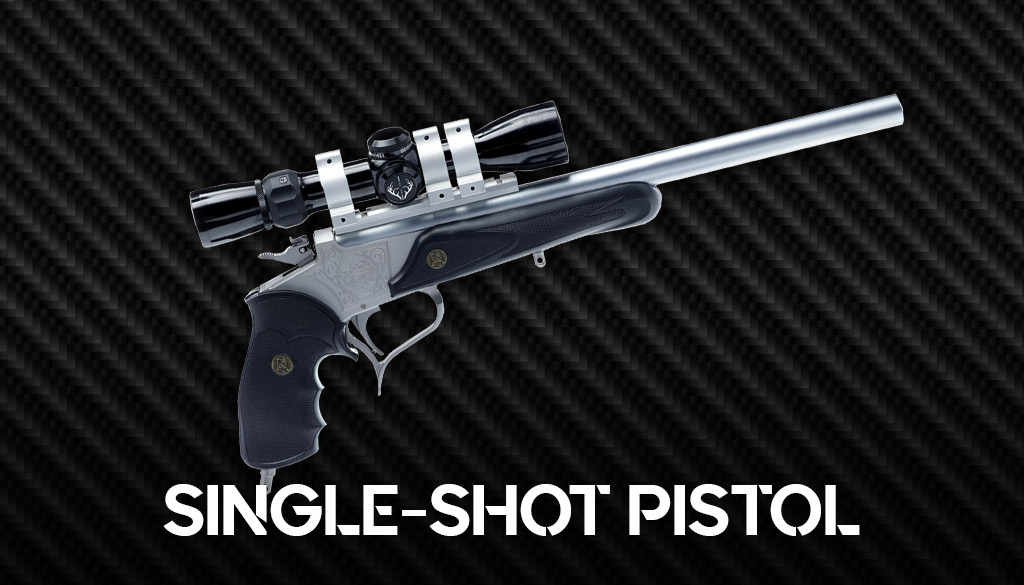
The Thompson Center Arms Contender single-shot pistol comes in a variety of different calibers.
You may not be in the market for a single shot, but the demand never disappeared, and manufacturers have responded with some incredible versions to this day. There are even muzzleloading handguns that remain true to the nostalgic look and feel of the originals. Others available are of a more modern design and often used for hunting and punching paper. In both cases, the handguns feature improvements only made possible by today’s manufacturing techniques and materials.
Not all modern single-shot handguns require a tedious, front-stuffing reload, though. In fact, the break-action style remains popular for self-defense. In this design, the lower receiver (grip and trigger) and barrel/chamber assembly rotate apart, which allows insertion of a fresh cartridge into the chamber. Locking the pistol back together makes it ready to shoot, unless it also requires safety disengagement or hammer cocking.
It sounds woefully ancient and underpowered, but the number one rule of winning an unavoidable gunfight is, “Have a gun.” These designs are small, weigh very little and remain a popular pocket carry backup. They come chambered for a variety of cartridges, from the peppy little .22 Win. Mag. to bigger options more associated with self-defense.
Single-Shot Variants
There are also larger break-action and bolt-action single-shot handguns designed for hunting and competitive shooting. They come in a variety of chamberings, although most of the cartridges they digest are associated with centerfire rifles. Barrels are long and these handguns are bulky enough that they don’t lend themselves readily to holstering.
A few of the bolt-action versions have a small magazine in the stock. Technically that may exclude them from single-shot inclusion, but the design is identical, despite the increased ammunition capacity.
Derringers—Self-Defense
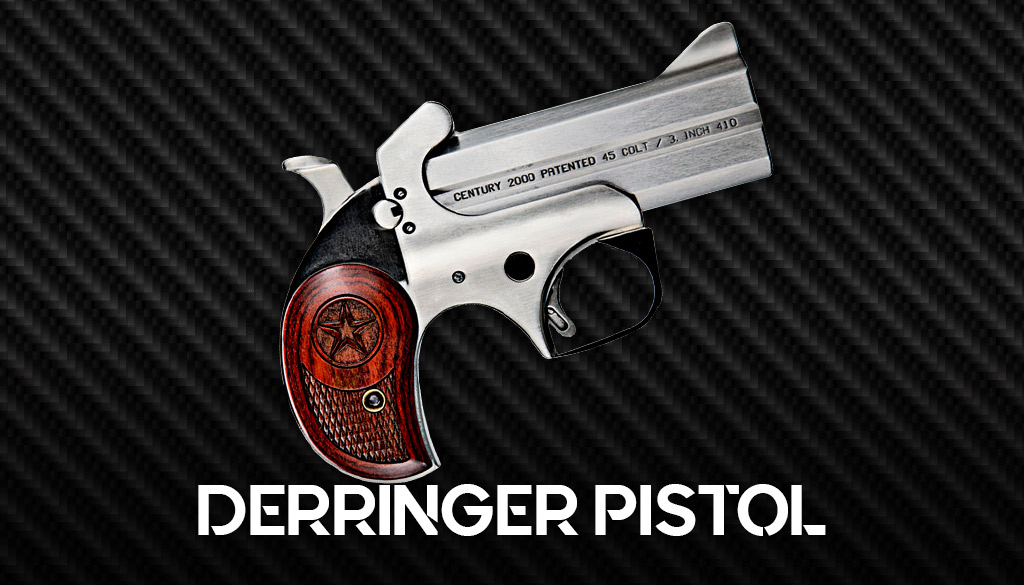
The Bond Arms Century 2000 is a derringer pistol available in more than 20 different calibers.
Slow follow-up shots were a problem with the first handgun designs, so designers added another barrel and chamber. This effectively provided two shots, if needed, quickly and efficiently.
Muzzleloading versions appeared, although derringers operating off the strong break-action design for cartridges is where it gained fame. There are some incredible versions made today. Modern materials and CNC machining have strengthened these handguns to the point that you can find one in virtually every handgun cartridge imaginable.
At least one company makes models with interchangeable barrels/chambers. Pick up one for a less -stout cartridge and practice is more comfortable. Swap to the self-defense chambering before you head out onto the street.
They are reliable, small and easily concealed. It’s a popular backup or even primary handgun for people with carry permits.
Popular Handgun Types: Revolvers
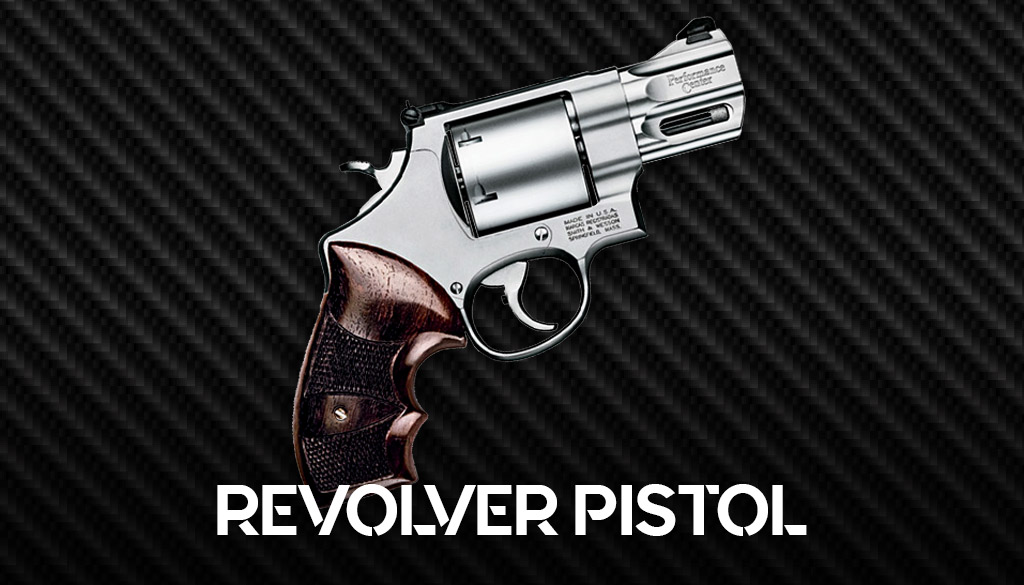
Smith & Wesson revolvers have become the industry standard for wheel guns in the modern age.
One or two cartridges didn’t satisfy designers for long, much less the shooters who relied on handguns for survival. The revolver was the first higher-capacity repeater designed for single handed use.
The principle sounds simple. A cylinder and ammunition it holds rotate—or revolves, hence the name—after each shot until a fresh load locks into place directly in front of the firing pin and barrel. A second shot is now possible, unless you’ve come full circle, staging an empty casing and spent primer in front of the hammer. Then it’s time for a reload, which brings up some differences to consider in revolvers.
The cylinder in single actions, the first revolver models, didn’t swing out from the handgun’s frame. That meant ejecting empty brass required lifting a gate and pushing an ejector rod to force each casing out—one at a time. It was light years ahead of single shots, but slow. The ammo/cylinder also did not turn until a shooter cocked the hammer.
Double-Action Revolvers
The popular handgun types double-action revolvers came later. In this design, the cylinder rotates to a fresh cartridge with each trigger squeeze. In early models that added mechanism made trigger let-off weights less than optimal, and even today they rarely rival the crisp feel of a single action. One huge advantage is the fact that the cylinder swings out, which allows expulsion of spent brass, simultaneously, with a single push of the ejector rod.
Reloads on modern double actions are fast, thanks to the invention of half-moon clips, speed loaders and speed clips, which hold spare ammo perfectly for inserting the cartridges. Double actions continue to be a popular choice, particularly those with short barrels, for carry and self-defense. Revolver-only competitions take place annually across the country, and with the right chambering they’re ideal for hunting.
Single actions require insertion of new cartridges—one at a time—through that gate. Another drawback in some models is the design’s nasty habit of dropping the hammer during a sudden jolt on the cartridge directly below. Safety conscious shooters often leave that chamber empty for that reason. Their barrels are usually long, and the gun’s modern uses include hunting, competition (particularly cowboy action) and plinking.
Semi-Auto Pistols—Competition, Plinking, Self-Defense
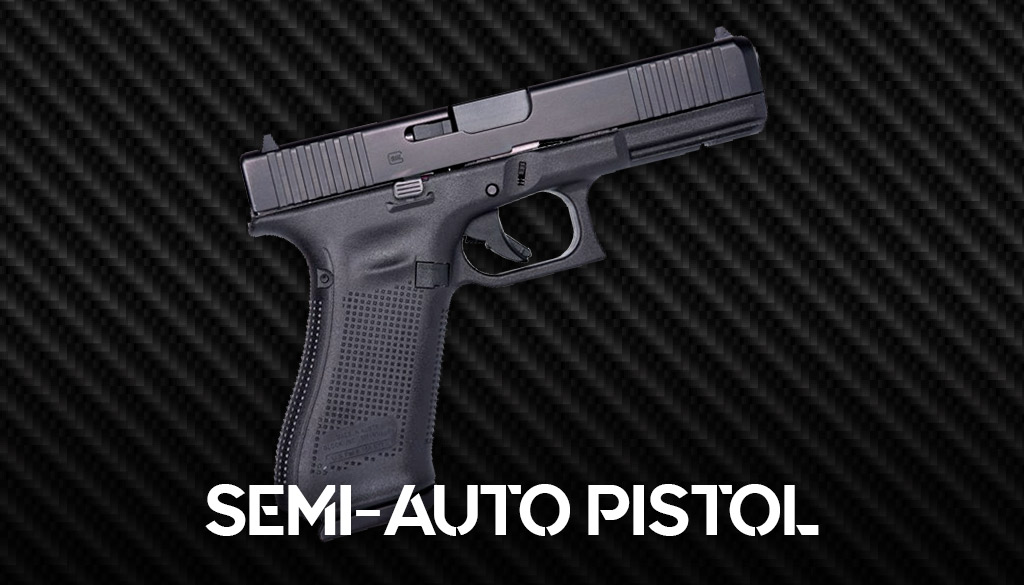
The Glock 17 semi-auto pistol is one of the best selling semi-auto pistols in the world.
The first semi-automatic pistols appeared in the late 1890s and there’s been no slowdown in innovation. Today these popular handgun types are available in chamberings from tiny rimfires up to heavy-hitting centerfire cartridges. They are usually small and light, but can be big if you prefer. Most are accurate and reliable.
Semi-auto pistols hold a virtual exclusive in action shooting sports, they are ideal for carry and self-defense and replaced nearly all law enforcement revolvers years ago. Their cycling motion even soaks up some of the recoil, making most of them a pleasure to shoot during lengthy plinking sessions.
Semi-Auto Operation
The system employed by each pistol varies, but the basics of operation are virtually identical. With each shot a mechanism in the gun captures part of the energy released, then transfers it to part of the firearm. Usually, it’s the slide, but it can include bolt carrier group in the new modern sporting versions or other devices. The slide or bolt group then moves back until its extractor hits and grabs the empty casing, ejects it, and comes to a full rearward position.
It then begins moving forward (usually due to a spring compressed during the initial cycle), picking up a fresh cartridge from the magazine along the way, chambering it, and finally when it reaches full forward position the pistol is at full lockup. It’s now ready for another squeeze of the trigger.
The fact that this all occurs in a fraction of a second makes every component critical. If anything is slightly off, things jam up. Magazine lips bend, bullet weights can affect energy capture, and even holding the gun weakly (so-called limp wristing) adds up to potential stoppages.
Proper maintenance, practice, and testing self-defense loads exhaustively minimize the chances of a problem during a criminal encounter. Their performance during the Global War on Terror and every day in the hands of law enforcement as they protect and serve, however, is proof of their reliability. Their magazines make reloads fast and effortless (with practice) and the round count they hold is nearly always higher than a revolver.
Choosing The Right Handgun
You can’t go wrong with most of today’s popular handgun types — but how do you choose the one that’s right for you? Whether revolvers or pistol family (which includes single-shots, derringers, and semi-autos)—but by knowing which ones are best suited for your favorite pursuit, you’re better armed to make the right purchase decision.


